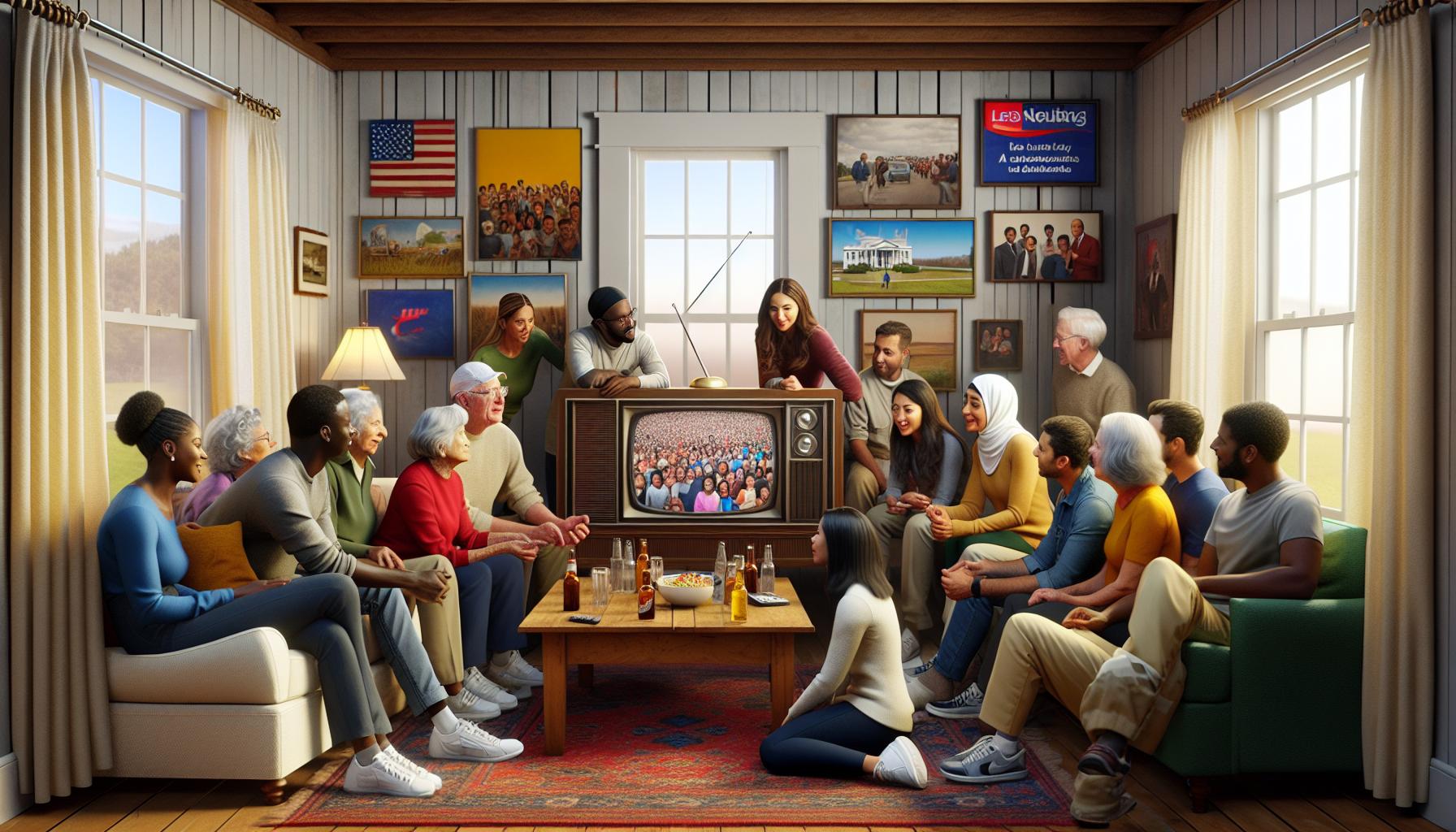The Best Fluffy Pancakes recipe you will fall in love with. Full of tips and tricks to help you make the best pancakes.
Broadcast media advertising remains a powerful force in today’s marketing landscape reaching millions of viewers and listeners through television and radio platforms. Despite the rise of digital media this traditional advertising method continues to influence consumer behavior and brand awareness on a massive scale.
Traditional broadcast advertising offers unique advantages that digital platforms can’t replicate. From prime-time television spots to drive-time radio segments advertisers can target specific demographics and geographic regions with precision. The combination of sight sound and motion in TV commercials creates an emotional connection with audiences while radio’s intimate nature builds trust and familiarity through voice and audio messaging. These tried-and-true channels help businesses establish credibility and maintain a strong market presence in an increasingly fragmented media environment.
What Is Broadcast Media Advertising
Broadcast media advertising involves distributing promotional content through television and radio channels to reach mass audiences simultaneously. This form of advertising utilizes audio-visual and audio-only formats to deliver branded messages across geographic regions.
Types of Broadcast Media Platforms
- Network Television reaches nationwide audiences through major broadcasters like ABC, NBC, CBS, FOX
- Local Television targets specific metropolitan areas through affiliate stations
- Cable Television delivers content to subscribers through specialized channels like ESPN, CNN, HGTV
- Terrestrial Radio broadcasts over AM/FM frequencies to local markets
- Satellite Radio provides nationwide coverage through subscription services like SiriusXM
- Internet Radio streams audio content through platforms like Pandora, Spotify, iHeartRadio
- Time Slots: Prime time (8-11 PM), daytime (9 AM-5 PM), late night (11 PM-2 AM)
- Ad Formats:
- 15-second spots
- 30-second commercials
- 60-second infomercials
- Program sponsorships
| Broadcast Element | Television | Radio |
|---|---|---|
| Average CPM | $11-25 | $4-12 |
| Prime Time Hours | 8-11 PM | 6-10 AM, 3-7 PM |
| Typical Ad Length | 30 seconds | 30-60 seconds |
| Production Cost | $2,000-50,000 | $250-1,000 |
- Production Components:
- High-quality visuals
- Professional voiceovers
- Background music
- Sound effects
- Graphics
- Call-to-action elements
Benefits of Broadcast Media Advertising

Broadcast media advertising delivers measurable advantages for businesses seeking mass market exposure and brand recognition. The combination of television and radio platforms creates multiple touchpoints for reaching diverse consumer segments.
Wide Audience Reach
Broadcast advertising connects with millions of viewers and listeners simultaneously across geographic regions. Network television reaches 96% of U.S. households, while radio captures 92% of Americans aged 18+ weekly. Prime-time television slots access 15-20 million viewers per show, enabling advertisers to achieve significant market penetration in a single broadcast.
High Impact and Engagement
Broadcast advertisements create memorable experiences through sight, sound and motion elements. Television commercials generate 47% higher emotional response compared to digital ads, leading to stronger message retention. Radio advertising maintains an average listener attention span of 12 minutes, creating opportunities for detailed brand storytelling.
| Brand Building Metric | Television | Radio |
|---|---|---|
| Weekly Reach | 96% of households | 92% of adults |
| Brand Recall | 60% increase | 48% increase |
| Trust Factor | 71% credibility | 82% personality trust |
| Emotional Connection | 47% higher than digital | 35% higher than digital |
Creating Effective Broadcast Ad Campaigns
A successful broadcast advertising campaign integrates strategic planning with creative execution. Effective campaigns combine audience targeting with compelling storytelling to maximize return on investment.
Setting Clear Campaign Objectives
Campaign objectives direct the strategy for broadcast media advertising by establishing measurable goals. Here are essential elements for setting objectives:
- Define specific metrics for success:
- Brand awareness increase percentage
- Sales growth targets
- Market share expansion numbers
- Website traffic volume goals
- Establish timeline benchmarks:
- Campaign duration periods
- Peak broadcasting times
- Frequency of ad placements
- Performance review intervals
- Target audience parameters:
- Demographics (age, income, location)
- Viewing/listening habits
- Consumer behavior patterns
- Media consumption preferences
- Visual components for television:
- High-definition footage
- Professional lighting
- Color psychology application
- Brand-consistent graphics
- Audio elements across platforms:
- Professional voiceovers
- Original music scores
- Sound effects library
- Clear call-to-action audio
- Message structure guidelines:
- 15-30 second format optimization
- Single message focus
- Brand message placement
- Memorable taglines
| Creative Element | Impact Metric | Industry Standard |
|---|---|---|
| Visual Recall | Brand Recognition | 65% |
| Audio Signature | Message Retention | 58% |
| Call-to-Action | Response Rate | 23% |
| Production Quality | Viewer Trust | 71% |
Measuring Success in Broadcast Advertising
Broadcast advertising success relies on specific metrics that track campaign performance across television and radio platforms. These measurements provide quantifiable data to evaluate advertising effectiveness and justify marketing investments.
Key Performance Metrics
Broadcast advertising effectiveness emerges through multiple measurement indicators:
- Gross Rating Points (GRP): Calculates total audience exposure by multiplying reach percentage by frequency
- Cost Per Point (CPP): Measures the cost to achieve one GRP in a specific market
- Reach: Tracks the percentage of target audience exposed to the ad at least once
- Frequency: Records average number of times viewers see an advertisement
- Share of Voice: Compares advertising presence against competitors in the same market
- Brand Lift: Measures changes in brand awareness recall recognition after campaign exposure
| Metric Type | Average Performance |
|---|---|
| TV Ad Recall | 32% within 24 hours |
| Radio Brand Recognition | 82% for regular listeners |
| GRP Efficiency Rate | 65-75% for prime time |
| Average Weekly Reach | 89% for combined TV/radio |
- Sales Correlation: Tracks direct sales increases during campaign periods
- Market Mix Modeling: Isolates broadcast media impact from other marketing channels
- Attribution Analysis: Maps customer journey touchpoints to broadcast exposure
- Cost Per Acquisition: Calculates expense for each new customer gained
- Lifetime Value Ratio: Compares customer acquisition costs against long-term revenue
| Analysis Method | Typical Measurement Period |
|---|---|
| Sales Correlation | 30-90 days |
| Market Mix Model | 6-12 months |
| Attribution Study | 3-6 months |
| CPA Assessment | Per campaign basis |
| LTV Analysis | 24-36 months |
Current Trends and Future Outlook
Broadcast media advertising continues to evolve with technological advancements and changing consumer behaviors. The integration of traditional broadcasting with digital technologies creates new opportunities for advertisers to enhance targeting capabilities and measurement accuracy.
Digital Integration
Connected TV platforms merge traditional television with digital streaming capabilities, reaching 84% of U.S. households in 2023. Smart TVs enable interactive features such as QR codes, clickable overlays and second-screen experiences that drive immediate consumer engagement. Advanced TV solutions incorporate:
- Dynamic ad insertion allowing real-time content updates
- Cross-device retargeting between TV and mobile devices
- Shoppable TV commercials with direct purchase options
- Voice-activated responses to broadcast advertisements
- Social media integration with live programming
| Metric | Value |
|---|---|
| Programmatic TV Market Size 2023 | $6.4B |
| Expected Annual Growth Rate | 29% |
| Automated Buy Rate | 47% |
| Average CPM Reduction | 18% |
| Real-time Optimization Rate | 92% |
- AI-powered audience segmentation algorithms
- Real-time bidding platforms for broadcast inventory
- Automated campaign optimization tools
- Cross-channel attribution modeling
- Predictive analytics for performance forecasting
Conclusion
Broadcast media advertising remains a cornerstone of effective marketing strategies despite the digital revolution. Its unmatched ability to create emotional connections while reaching vast audiences makes it an invaluable tool for businesses seeking to build lasting brand relationships. The fusion of traditional broadcasting with emerging technologies has created new opportunities for advertisers to enhance their campaigns through targeted messaging and real-time optimization.
As broadcast advertising continues to evolve businesses that leverage its strengths while embracing innovative features like dynamic ad insertion and cross-device retargeting will find themselves well-positioned for success. The future of broadcast advertising looks promising with connected TV platforms and programmatic solutions leading the way toward more sophisticated and measurable marketing initiatives.

